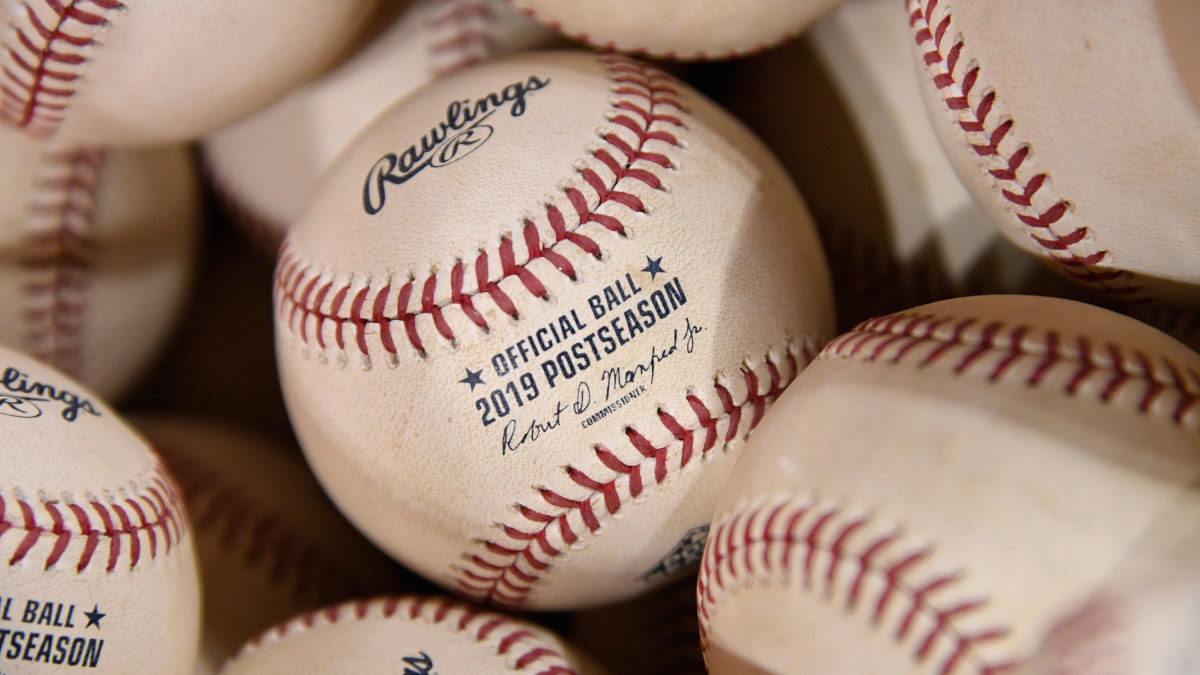The Postseason Baseball Has Created a New, Homer-Challenged Reality


NEW YORK — Seated in front of his locker, Yankees lefthander James Paxton demonstrates the pose of the postseason: arms shooting triumphantly skyward, then suddenly dropping in dismay. Balls that were home runs in the regular season are outs on the warning track in October, and everyone—fans, broadcasters and players—is getting fooled.
Count Astros shortstop Carlos Correa among the confused. “The one I hit to centerfield, I thought it was way gone,” he says of his 396-foot flyout in Game 2 of the ALCS. “And then I looked at [Brett] Gardner camping under it and I’m like, What the heck?”
Houston beat New York 4–1 in Game 3 to take a 2–1 ALCS lead. The afternoon featured three home runs, which journeyed a combined 1,201 feet. But, as has been true too often this postseason, all anyone wanted to talk about was the balls that fell short.
Big swings in the Big 🍎#TakeItBack pic.twitter.com/yOYB5ZUVgf
— Houston Astros (@astros) October 15, 2019
Last week, a study by Rob Arthur of Baseball Prospectus confirmed what anyone can see: The baseball is not carrying as far in October as it did from March through September, when the league shattered its single-season home run record with 6,776. There has not been so much drag on the ball since 2016, the year before dinger rates really spiked. Arthur estimated that the regular-season ball would have produced 50% more home runs than the postseason one has. The Cardinals’ analytics department calculated that the new ball travels about 4 ½ feet less far.
MLB owns Rawlings, the ball manufacturer, but the league says it has no idea what is going on. That may be true, although we’ll leave it to you to decide whether it’s better to be thought of as insincere or incompetent. But regardless of the cause, the result is that we are watching a different sport than we were a month ago.
Teams have adapted, at the plate and on the mound and in the field. Nationals manager Dave Martinez told his players before the NLCS started to consider bunting for hits. Yankees pitchers have begun pounding the top of the strike zone: Contact on high fastballs is no longer quite so dangerous. And, according to Statcast data, all four teams in the Championship Series moved some of their outfielders in at least a few feet.
Pitchers appreciate their newfound margin for error. Hitters lament it. “We talk about it,” says Correa. “The fans come to the park to watch home runs. They don’t come here to watch balls at the fence. We like the other balls better.”
The ones he’s stuck with may be changing outcomes. “We do a good job of elevating the baseball,” Dodgers manager Dave Roberts said during the NLDS against the Nationals. “So to get a couple extra feet on the baseball would certainly help us.” Sure enough, in the deciding Game 5, with the score tied at three in the bottom of the ninth, L.A. catcher Will Smith smashed a slider to rightfield. Similarly-hit balls this season had traveled an average of 388 feet. The rightfield wall at Dodger Stadium stands 385 feet from home plate. Smith didn’t know the math, but he knew the sound. The rookie flipped his bat and floated toward first base, imagining the mob that would await him at home plate. The Dodgers dugout emptied. Then the ball settled into Adam Eaton’s glove. The Nats won, 7–3, in 10 innings.
Reaction of #Dodgers bench after a deep drive from the bat of Will Smith that looked like the game winner in 9th inning. pic.twitter.com/RW1kRhdlO8
— James E. Clark 3 (@EVT_JClark) October 10, 2019
On Tuesday, New York first baseman DJ LeMahieu strode to the plate in the fourth inning. His team had two outs, two men on base and a two-run deficit. LeMahieu clobbered a slider. Similarly struck balls are home runs 62% of the time. This one was a flyout shy of the warning track. An inning later, in the same situation, shortstop Didi Gregorius whacked a fastball toward the short rightfield porch, 343 feet away. Comparable balls averaged 354 feet. Rightfielder Josh Reddick caught this one with his back against the wall.
It’s unfair to delve too deeply into counterfactuals. On Tuesday, Astros catcher Martín Maldonado hit two drives that in April might have drifted into the stands; instead he settled for an out and a double. “If Didi's ball goes out, I feel like both of Maldonado's balls go out and maybe we still have the lead,” Astros starter Gerrit Cole points out.
The baseball has changed. But it has changed for everyone. So teams will have to continue to get used to their new reality. And the rest of us will continue to get used to ours: hands high in the air, and then—like the ball—not.
